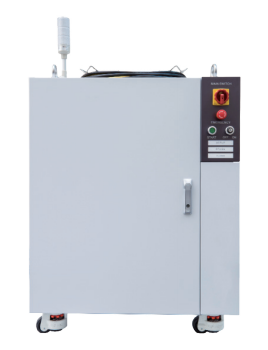With the latest development of high brightness laser, the opportunities of laser material processing and application are increasing in many new fields. We take the gem rod solid-state laser with very mature technology as an example, and its two completely different development directions deserve attention. On the one hand, the diameter of the gem rod is expanded and the length is reduced to hundreds of microns, which makes the disc laser. On the other hand, the length of the rod is increased and the diameter is reduced, which is called fiber laser.
When it comes to fiber lasers, the length of the fiber ensures that the beam quality is close to the diffraction limit (in a given wavelength laser, the theoretical limit, or the minimum possible focusing size). The resonator of this laser does not need any adjustment, and the beam quality is regulated by the physical characteristics of the optical fiber. In addition to the above two advantages of fiber laser, it should also be understood that its pump energy can be coupled through transmission fiber and transmitted to active fiber or laser receiving fiber, so as to avoid the cumbersome process of optical adjustment from diode pump source to fiber laser.
The smaller the BPP value, the better the beam quality. Compared with other lasers, fiber lasers show better beam quality (only slightly inferior to carbon dioxide lasers in the range of 5000 to 10000 watts). At Fraunhofer, we agree that fiber laser has a broader future. In Dresden, Fraunhofer IWS in Germany and the IWS branch in Plymouth in Michigan in the United States, we have various fiber lasers in the following table, which can be used for the research of industrial processing development.
These fiber lasers have the following characteristics: very small volume, no parts that need to be adjusted accurately between the pump source and the final optical focusing system, no adjustment, and high electro-optic conversion efficiency (25-30%). In addition, fiber laser has excellent beam quality and long pump source life (more than 50000 hours). We can use a very small beam expanding and collimating system, and then we can use a very small galvanometer system for high-speed beam manipulation.

The length of a 15 micron diameter fiber is limited to a few meters because of the Raman scattering effect, which will reduce the output energy when using a longer fiber transmission. The length of 50 micron optical fiber is limited to 15 meters, and the length of 100 and 200 micron optical fiber is not limited! If a shutter or fiber-to-fiber coupling connector is used, 100 micron optical fiber out, 50 micron optical fiber in, or 200 micron optical fiber out, 100 micron optical fiber in must be used. In the above two conditions, the beam quality can reach 8mm.mrad. This is equivalent to the disc laser, and the welding results of the two lasers are very close.
Taken together, the fiber laser system used in Fraunhofer is very stable without any problems. The lamp pumping system itself has many conventional problems. Some other fiber laser users have mentioned that the optical reflection problem in operation has not caused any trouble to us so far. Our experimental data show that the optical reflection has no effect on the output power of the laser. Even so, in practice, we do not advocate using the beam design perpendicular to the workpiece, but using an angle slightly inclined by about 6 degrees. There are no problems in cutting and welding steel and aluminum, but when the workpiece is copper, the situation is more complex and needs to be handled with great care.
In our research, due to the excellent beam quality of fiber laser, the welding depth and speed can reach the fine and narrow weld equivalent to electron beam welding. Due to the high beam quality, we can use a very compact and compact focusing and scanning optical system without changing welding parameters, and it is suitable for far-field technology. In both cases, the excellent beam quality of the laser will generate specific welding plasma (compared with Nd: YAG and disc laser). Protective gas must be used, otherwise absorption and main body scattering effects will occur.
Similarly, we used the data of other fiber lasers, bias Bremen's 4.0kw ylr7000 fiber laser (300 micron fiber). In conclusion, the following data show that not different lasers will cause different welding results, but different beam quality. Just like two kinds of fiber lasers with different beam quality and very similar other parameters, the experimental results are quite different.
Conclusion it can be stated that high power fiber laser is very suitable for different welding and cutting applications. High beam quality provides more opportunities and better performance than other laser systems.

Dongguan Chuangde Laser Intelligent Technology Co., Ltd
One stop laser welding solution service provider










